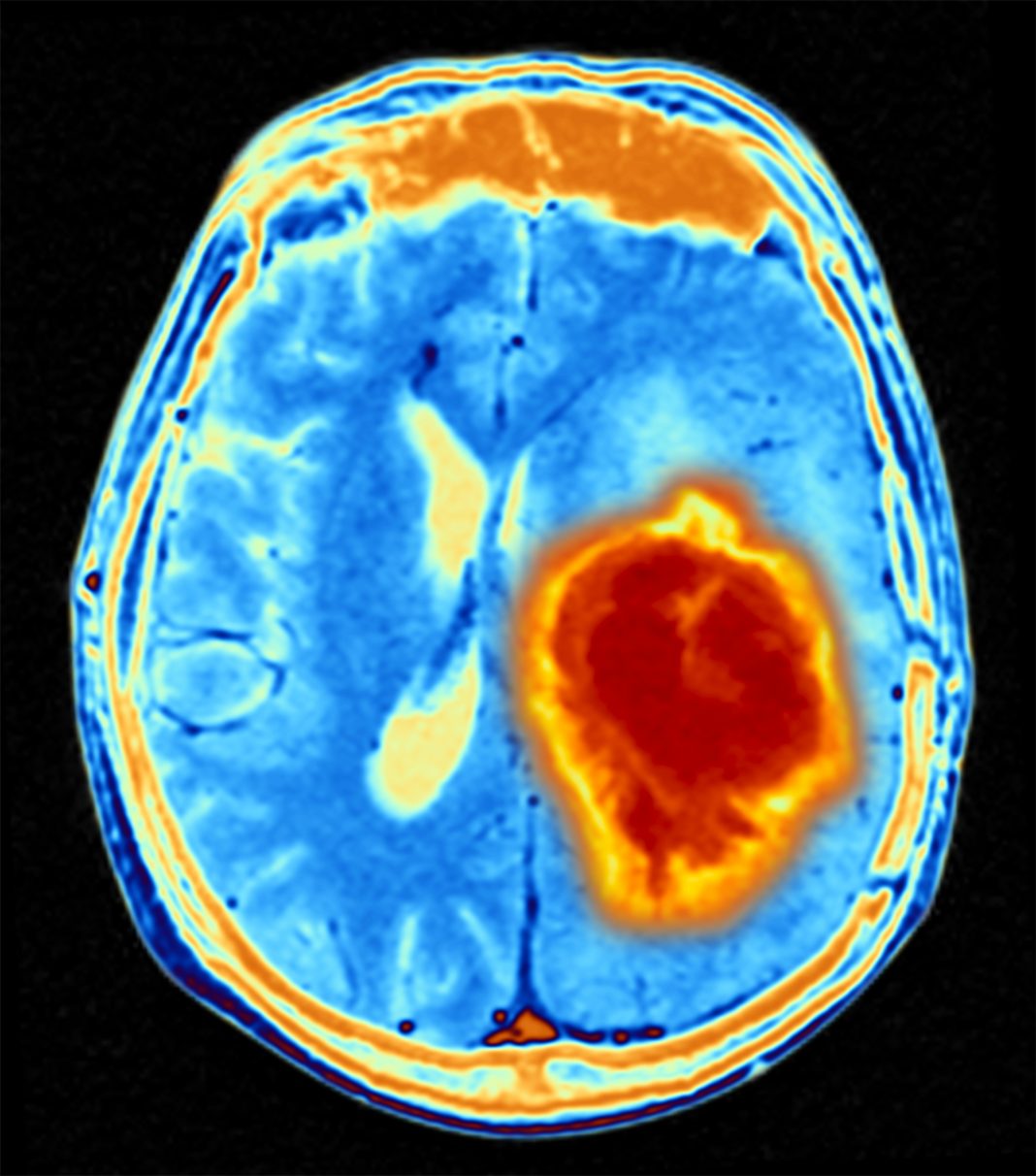Investigators at Georgetown Lombardi Comprehensive Cancer Center have identified biomarkers that could represent targets for novel drugs to treat glioblastoma (GBM) brain tumors.
Currently, the drug most often used to treat glioblastoma, temozolomide (TMZ), is uniquely able to cross the blood/brain barrier to attack the tumor but resistance develops rapidly, and many patients do not survive for more than a year after diagnosis. The new findings provide early evidence that there may be a benefit in targeting specific alterations in cancer cells with newer agents once a patient’s tumor becomes resistant to temozolomide.
“As a field, we have struggled to deal with the short-term effectiveness of temozolomide, as many of the drugs used successfully in other cancers are disappointing when they are subsequently tested in glioblastoma clinical trials,” said Rebecca B. Riggins, PhD, associate professor and associate director of education and training at Georgetown Lombardi. “One way to deal with this problem is to learn enough about how we can target features that help drug-resistant glioblastoma survive.”
Riggins is co-corresponding author of the team’s published paper in Science Advances, which is titled, “Temozolomide-induced guanine mutations create exploitable vulnerabilities of guanine-rich DNA and RNA regions in drug-resistant gliomas.”
Glioblastoma is the most diagnosed glioma and has an “abysmal” overall survival (OS) rate of ~5% at 5 years, the authors wrote. “With a median survival time of 14 to 16 months, it is uniformly fatal.” In fact, only about 5% of patients diagnosed with glioblastoma live for five years after diagnosis, and survival rates haven’t changed much since the mid-1970s.
Temozolomide has been the standard of care for glioma therapy since 2005, in combination with surgery and radiation. Temozolomide preferentially targets guanine nucleotides in DNA and RNA, the authors explained. Guanines are “critical nucleotides in many DNA and RNA secondary structures,” they pointed out, and are the target of many other chemotherapeutic agents. “Guanine is the most readily oxidized base, with the loss of an electron creating a hole that is preferentially targeted by spontaneous DNA damage, an event whose impact is compounded in tracts of guanines.” Two structurally and functionally important and distinct G-rich regions are G-quadruplexes (G4s) and RNA splice sites.
Previous studies have shown that G4s are important regulatory elements for certain oncogenes, and so temozolomide’s targeting of guanine impacts structures that regulate key cancer-causing genes. If these cancer-causing oncogenes could be kept turned off, the drug might have a longer period of activity. Knowledge has also been gleaned from studies of the neurodegenerative disease amyotrophic lateral sclerosis, which demonstrates some features that are similar to those of glioblastoma, and which might also inform new strategies for glioblastoma treatment, the researchers theorized. “Some of the mechanisms underlying neurodegenerative diseases appear to be relevant to temozolomide resistance in glioblastoma,” said Deanna M. Tiek, PhD, a F99/K00 fellow at the Northwestern University Feinberg School of Medicine and the Robert H. Lurie Comprehensive Cancer Center and co-corresponding author. Tiek was a PhD student in Riggins lab when this research began.
As the first anticancer drugs were DNA targeting and still play a major role in cancer treatments, the team focused on the downstream effects of TMZ-induced DNA damage at guanine nucleotides. “In this study, we sought to use the well-known mechanism of action of TMZ to define targetable dependencies of TMZ-resistant GBM,” they wrote. “We went on to exploit the TMZ-induced DNA and RNA changes in TMZ-resistant GBM with both known and novel small molecules targeting G4s and the activity of splicing regulatory kinases.”
Riggins noted, “We focused on the details of how temozolomide damages DNA to help radiation treatments work better. Our team found that temozolomide-resistant glioblastoma relies on a protein called CLK2, and that inhibiting the activity of CLK2 could cause widespread confusion, leading to cancer cell death.” CLK2 has been implicated in the aggressiveness of the tumor. Beyond identifying vulnerable modifications, the researchers were also able to identify drugs that help to stabilize RNA and could potentially slow or stop the resistance that typically develops to temozolomide.
The team’s studies using two independent models of acquired and intrinsic TMZ-resistant cell lines and GBM clinical samples in addition identified the protein EWSR1 as the first—“to our knowledge,” they wrote—aggregating RNA binding protein in TMZ-resistant GBM.
The investigators are now undertaking studies in small animal models, where they will test to see if the novel CLK2 inhibitor can efficiently enter the brain and shrink temozolomide-resistant glioblastoma. “We are also investigating whether other anticancer drugs that attack guanine and are commonly used in triple-negative breast cancer and colorectal cancer, for example, change RNA structures in a similar way, which could make CLK2 inhibition more effective in recurrent, drug-resistant forms of those cancers as well,” stated Riggins.
“Overall, these data establish a clinically relevant framework for future studies to determine the functional role of EWSR1 aggregation and aberrant splicing via CLK2 protein abundance in GBM,” the authors concluded.


